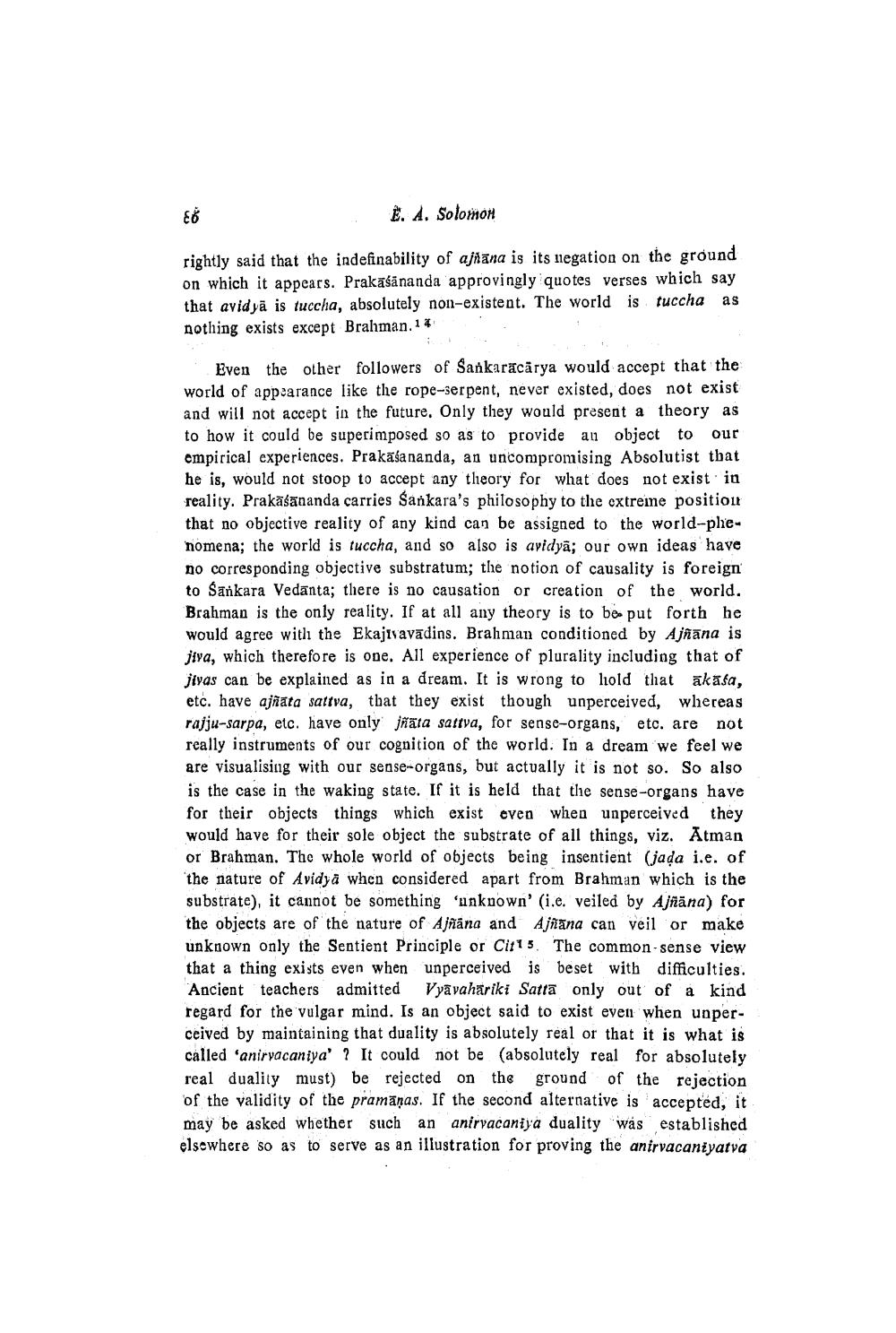________________
ε8
E. A. Solomon
rightly said that the indefinability of ajñana is its negation on the ground on which it appears. Prakāśānanda approvingly quotes verses which say that avidya is tuccha, absolutely non-existent. The world is tuccha nothing exists except Brahman. 14
as
Even the other followers of Sankaracarya would accept that the world of appearance like the rope-serpent, never existed, does not exist and will not accept in the future. Only they would present a theory as to how it could be superimposed so as to provide an object to our empirical experiences. Prakasananda, an uncompromising Absolutist that he is, would not stoop to accept any theory for what does not exist in reality. Prakasananda carries Sankara's philosophy to the extreme position that no objective reality of any kind can be assigned to the world-phenomena; the world is tuccha, and so also is avidya; our own ideas have no corresponding objective substratum; the notion of causality is foreign to Sankara Vedanta; there is no causation or creation of the world. Brahman is the only reality. If at all any theory is to be put forth he would agree with the Ekajivavadins. Brahman conditioned by Ajñana is jiva, which therefore is one. All experience of plurality including that of jivas can be explained as in a dream. It is wrong to hold that ākāśa, etc. have ajñāta sattva, that they exist though unperceived, whereas rajju-sarpa, etc. have only jñata sattva, for sense-organs, etc. are not really instruments of our cognition of the world. In a dream we feel we are visualising with our sense organs, but actually it is not so. So also is the case in the waking state. If it is held that the sense-organs have for their objects things which exist even when unperceived they would have for their sole object the substrate of all things, viz. Atman or Brahman. The whole world of objects being insentient (jada i.e. of the nature of Avidya when considered apart from Brahman which is the substrate), it cannot be something 'unknown' (i.e. veiled by Ajñāna) for the objects are of the nature of Ajñana and Ajñana can veil or make unknown only the Sentient Principle or Cit15. The common-sense view that a thing exists even when unperceived is beset with difficulties. Ancient teachers admitted Vyāvahāriki Satta only out of a kind regard for the vulgar mind. Is an object said to exist even when unperceived by maintaining that duality is absolutely real or that it is what is called 'anirvacaniya' ? It could not be (absolutely real for absolutely real duality must) be rejected on the ground of the rejection of the validity of the pramanas. If the second alternative is accepted, it may be asked whether such an anirvacaniya duality was established elsewhere so as to serve as an illustration for proving the anirvacaniyatva




